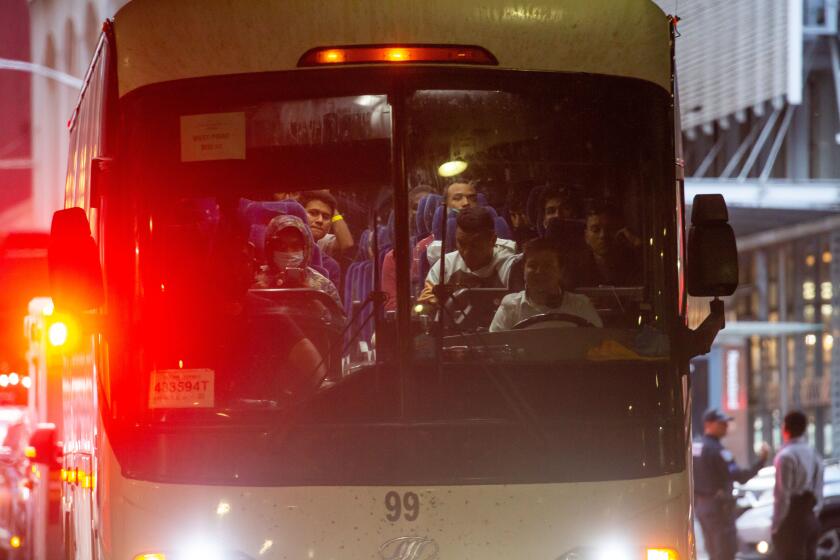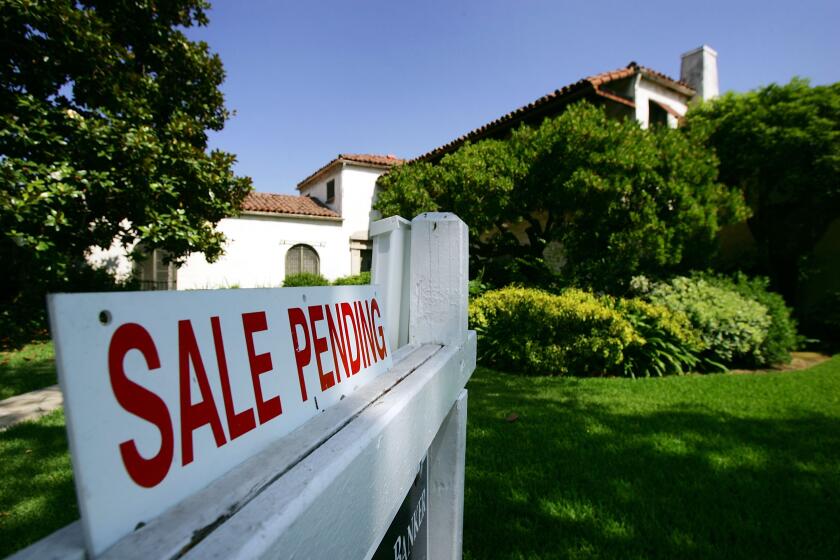How bad is inflation for California? We’re already paying a more than 35% premium to live here

- Share via
A small uptick in the nationwide inflation rate last month was an unwelcome glitch for many consumers and for Washington policymakers, but it may be a more serious development for most of California.
The December increase, at 3.4% over the price level a year earlier, could make it harder for the Federal Reserve to begin cutting interest rates in spring, as many analysts have predicted. It was also bad political news for President Biden, who has presided over a sharp drop in inflation but has yet to get credit for it among voters.
But even the small uptick in inflation will have more notable consequences in California because price levels for goods and services, including energy and housing, are already so much higher than almost anywhere else in the country.
Apart from Hawaii, many studies rank California as first or second among the states with the highest cost of living, between 35% and 45% above the national average.
What that means as a practical matter is that a household in Los Angeles with $100,000 income could maintain the same standard of living while earning $69,000 in Dallas and $65,000 in Las Vegas, according to Bankrate.com.
New data show the increasingly crucial role immigrants play in the economy and the American workforce — especially in California.
The high cost of living is a prime factor in the ongoing exodus of many Californians, and also may help explain the relatively lackluster mood of people in the state. Consumer confidence in the U.S. has picked up, but California remains below the national average and significantly trails other big states including Texas, Florida, New York and Pennsylvania, according to the Conference Board.
Excluding the 2020 pandemic year, Californians’ consumer sentiment hadn’t been so down for a December since 2014. The Conference Board surveys both people’s current condition and their expectations, and California consumers have a very low appraisal of what the next six months will bring, just as the country as a whole.
“They feel quite beaten up. Part of it is inflation,” said David Tinsley, a senior economist at the Bank of America Institute.
Thursday’s inflation report from the Bureau of Labor Statistics showed that the consumer price index in December increased 0.3% from November, higher than analysts had expected. The increase damped some investors’ hopes for an imminent interest rate cut, which would ease borrowing costs for businesses and households, potentially strengthening the overall economic outlook.
BLS data showed consumer prices in the Los Angeles area in December rose 3.5% from a year earlier, a bit higher than the national average for all urban consumers. The year-over-year inflation rate for the Bay Area in December was 2.6%.
In a reversal from past decades, more college graduates and professionals are moving out of California than coming into it to escape the higher taxes and cost of living.
Inflation in the U.S. had been coming down fairly quickly since peaking at 9.1% in June 2022 as key pandemic-induced effects that contributed to the price surge abated. Those included supply chain disruptions and a jump in stay-at-home-spending that outran inventory.
Inflation for staple goods such as groceries and clothing is now running below the Fed’s preferred overall inflation target of 2% — and some things including appliances and electronics are seeing outright declines in prices. Eggs, for example, cost 23% less than a year ago, but prices are still higher than in 2019 and could rise again.
A new bout of avian flu has hurt California poultry farms and is “just adding to the uncertainty about supply and therefore prices,” said Ricky Volpe, an agribusiness professor at Cal Poly San Luis Obispo.
In recent months airline fares and prices for hotel rooms and rental cars also have come down, signs that consumers may be pulling back after a flurry of catch-up travel and other spending as the economy reopened from COVID. Flagging demand may also have prompted some big companies to back off price hikes that originated with attempts to recoup profits lost during the pandemic.
Still, economists said services inflation may remain stubborn. The cost of shelter was up 6.2% in December from a year ago. Hospital services increased 5.5%. And transportation services rose 7.1%, thanks to soaring auto insurance premiums, which analysts say is due partly to more vehicles on the road and increased car thefts.
Smaller and cheaper towns and counties across the nation are competing to lure higher-income workers from California and other costly places.
California consumers may be feeling relatively less relief because prices for housing, energy and services such as entertainment, dining out and personal care tend to be so much higher than in most other places.
Gasoline prices, for example, have fallen by about $2 a gallon on average across the country as well as in California since their peak in June 2022, according to the American Automobile Assn., but the disparity remains painfully obvious for consumers.
As of Thursday, regular gas cost $3.08 a gallon nationally but $4.62 in California.
High as gas prices are, the single biggest factor in the widening gap in cost of living between California and most other states is housing. Whereas consumers’ costs for food and health services in California are just slightly more than in most other states, housing costs were about double the national average, based on data from the Council for Community & Economic Research.
According to Zillow, the median rent for housing of all kinds in California was $2,750, about 38% more than for the nation. The median sale price for an existing single-family house in the U.S. in November was $392,100, according to the National Assn. of Realtors. For California: $822,000.
The ‘house burden’ metric that compares income to shelter costs goes a long way toward explaining Southern California’s housing crisis.
Average rents and home purchase prices across the country have been trending slightly down in recent months, but the difference in what one can buy or rent in California versus elsewhere has been hard for many people to ignore.
Those feelings can also drive movement. Studies by the Census Bureau show that by far the No. 1 reason people move is related to housing, with many wanting a better or cheaper place, or their own home.
“They’re not buying those consumer goods where there is deflation. They’re seeing the increase in the cost of rents and that’s what they’re feeling,” said Joseph Brusuelas, chief economist at RSM US, the accounting firm.
Most economists expect inflation to head downward this year closer to 2.5%, albeit with bumps along the way. Whether people will feel commensurately better about the economy is another matter.
“Consumers tend to anchor their view on the economy around a select number of prices,” Brusuelas said, noting that in Southern California that’s gasoline and housing. “In an area where real estate development is badly constrained, you’re going to have a very different perception of the economy and relative standards of living.”
More to Read
Inside the business of entertainment
The Wide Shot brings you news, analysis and insights on everything from streaming wars to production — and what it all means for the future.
You may occasionally receive promotional content from the Los Angeles Times.















